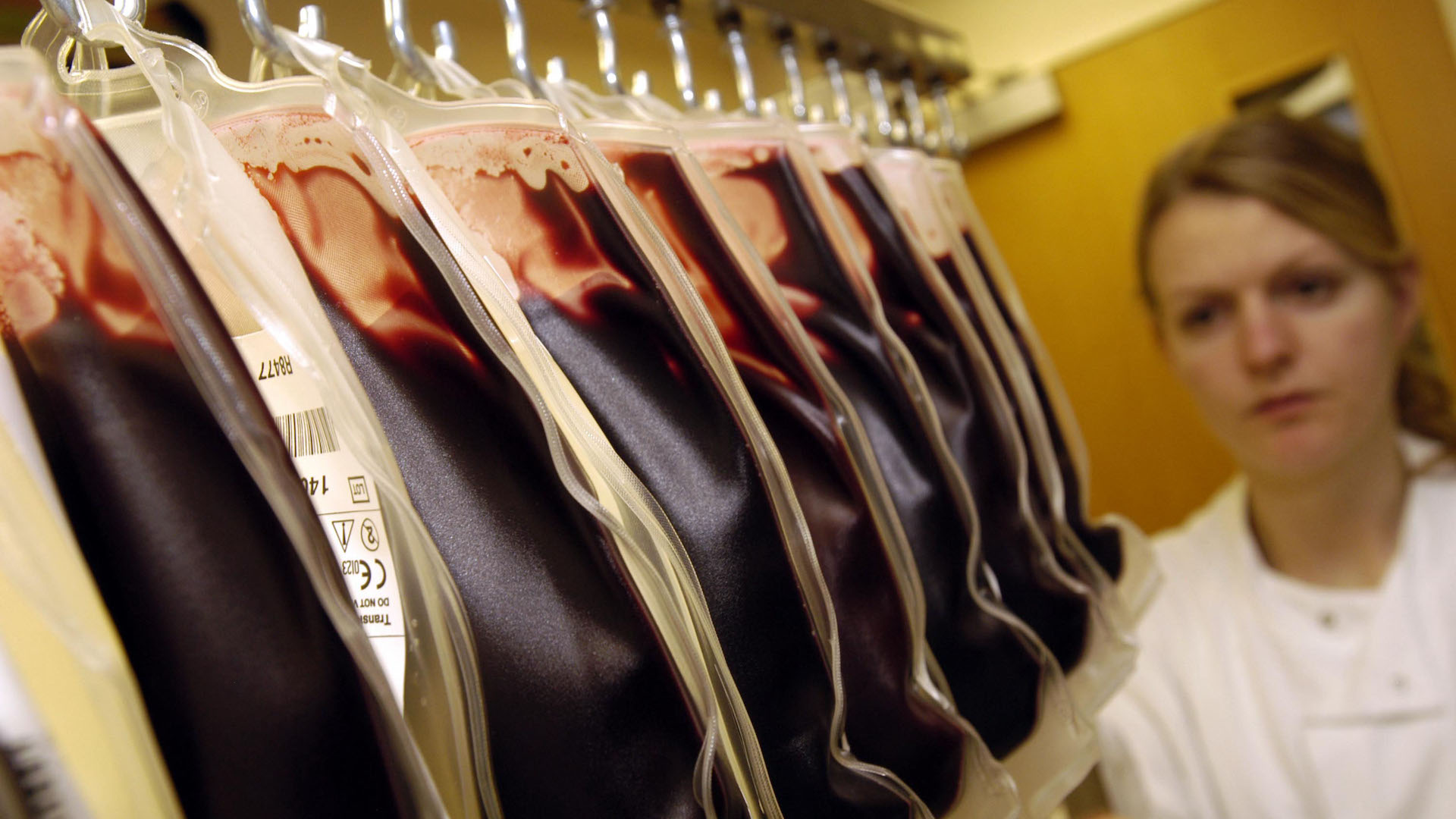Blood transfusions might transfer proteins involved in brain hemorrhage — but it would be incredibly rare
The risk of a rare type of brain hemorrhage may be transmissible, though the absolute risk is very low.

The risk of a certain kind of brain hemorrhage may be transmissible via blood transfusion, according to new research.
However, the findings aren't a reason to be concerned about getting a blood transfusion, because the actual risk of a transfusion causing a brain hemorrhage is extremely low. The research does, however, hint at the underlying causes of the brain bleed condition, called cerebral amyloid angiopathy (CAA), which involves buildups of the same protein that forms plaques in Alzheimer's disease, called amyloid-beta.
"The possible value of our study comes from us understanding more about the biology and the cause of these diseases," study co-author Dr. Gustaf Edgren, a cardiologist and epidemiologist at the Karolinska Institute in Sweden, told Live Science.
Related: How much blood is in the human body?
CAA is a condition in which people have repeated, unprovoked bleeding in the brain, known as intracerebral hemorrhage. CAA is not always well diagnosed or recorded, but it is probably responsible for about one-fifth to one-quarter of intracerebral hemorrhages, Edgren said.
Some previous research had found that CAA might have been transmitted via older human growth hormone treatments that were derived directly from human tissues, indicating that some biological risk factor for the condition might be able to transfer from person to person. To investigate, Edgren and his colleagues used data from more than 1 million blood donors and recipients in Sweden and Denmark.
They did not have direct information on whether the donors and recipients had the buildups of the amyloid-beta protein that signifies CAA, but they did have information on whether the individuals had experienced intracerebral hemorrhages.
Get the world’s most fascinating discoveries delivered straight to your inbox.
Their results showed that getting blood from a donor who later had multiple intracerebral hemorrhages — a symptom of CAA — raised the risk of having spontaneous intracerebral hemorrhages almost threefold.
These findings are preliminary, because the researchers haven't yet shown that the donors involved actually had CAA, Edgren warned. But if it is CAA, it could indicate that the misfolded proteins involved in the disease are transmissible. This would make CAA similar to diseases like Kreutzveld-Jakob or bovine spongiform encephalopathy (better known as mad cow disease), neurological disorders caused by misfolded proteins called prions. However, these diseases are transmissible via the consumption of nervous tissue, whereas there is no evidence CAA could be transmitted via diet.
"Our hypothesis is that we are actually transmitting misfolded amyloid-beta proteins from one individual to another and that's the whole reason we're seeing this," he said.
People in need of a blood transfusion should not worry, however, Edgren said. For one thing, scientists still haven't established what protein, if any, needs to be transmitted to cause hemorrhages, nor have they shown that misfolded proteins in blood would exist in sufficient quantities to travel to the brain and make any difference, Dr. Steven Greenberg, a professor of neurology at Harvard Medical School, wrote in a commentary accompanying the new study.
Furthermore, only 1 in 1,000 recipients in the study was exposed to the blood of a donor who later experienced intracerebral hemorrhage. Those people had a 2% risk of having a hemorrhage of their own over 20 years, translating to odds of about 1 in 50,000 for any given transfusion recipient. Moreover, Edgren added, most transfusion recipients are ill and unlikely to live long enough to reach that 2% risk over 20 years; it's much more likely that their original illness or some other condition will cause their death.
"There is virtually no reason to be alarmed for people that need to be transfused," Edgren said. "This is not something they should worry about."
What would be important, Edgren said, is establishing misfolded amyloid-beta proteins as the cause of CAA and other disorders, such as Alzheimer's. In these brain conditions, it can be hard to tell which factors cause the disease and which are just side effects of the condition. The researchers now plan to study blood samples from donors to look for the misfolded proteins.
"If we can show that these donors have something we can measure in their blood and we can then track into their recipients, then we can say more about the biology and the true causation," Edgren said.
The researchers reported their results Sept. 12 in the journal JAMA.

Stephanie Pappas is a contributing writer for Live Science, covering topics ranging from geoscience to archaeology to the human brain and behavior. She was previously a senior writer for Live Science but is now a freelancer based in Denver, Colorado, and regularly contributes to Scientific American and The Monitor, the monthly magazine of the American Psychological Association. Stephanie received a bachelor's degree in psychology from the University of South Carolina and a graduate certificate in science communication from the University of California, Santa Cruz.


